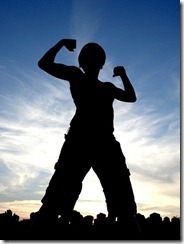 At age 35 I found out my bones weren’t as strong and healthy as a normal 35-year-old’s.
At age 35 I found out my bones weren’t as strong and healthy as a normal 35-year-old’s.
Back then, almost 20 years ago, on my first appointment with a new doctor, one of the forms I was asked to complete was a checklist of 13 risk factors for osteoporosis.
I read down the checklist. Am I female? Check. Am I white or of Asian descent? Check. Am I small boned? Check. Do I have a less than average consumption of foods with calcium? I am not a big consumer of dairy products, so: check. Was there a history of osteoporosis in my family? Check. Did I have a history of long-term use of corticosteroids? Check. Did I like my wine? Check.
Seven of 13, and I was just getting started.
The doctor ordered a test to measure my bone density, which was quick and painless.
A few days later she called and told me that I had osteopenia, a precursor to osteoporosis, in my hip bone and spine.
I had thought osteoporosis was an old lady disease. I guess I was wrong, because at age 35 I certainly wasn’t an old lady.
The doctor explained that bone is living tissue, which is constantly being absorbed and replaced, and that osteoporosis occurs when the creation of new bone doesn’t keep up with the removal of old bone. When you’re young, your body makes new bone faster than it breaks down old bone, and so your bone mass increases.
Most people, she told me, reach their peak bone mass in their early 20s. How likely you are to develop osteoporosis depends partly on how much bone mass you attained in your youth.
The higher your peak bone mass, the more bone you have “in the bank” and the less likely you are to develop osteoporosis as you age. The idea that my bones weren’t as strong as they used to be was a bit frightening.
I knew from my grandmother, mom and aunt that bone loss could contribute to a hunched posture, loss of height and a higher incidence of bone fractures. I learned that nearly one in two women and one in four men are likely to suffer from osteoporosis in their lifetime. That was a fact I didn’t know: Men can get osteoporosis, too.
Osteoporosis doesn’t hurt, but resulting bone fractures can cause pain, loss of mobility and sometimes can take away our ability to be independent.
I remember vividly my favorite aunt, who broke her hip and died within the year.
That fact in itself inspired me to follow my doctor’s orders.
Since my osteopenia was caught early, my doctor recommended lifestyle changes and supplements versus more aggressive treatments. She recommended weight-bearing exercise— walking and doing some upper body exercises with very light hand weights—and she suggested I take calcium supplements and vitamin D.
With these simple lifestyle changes, now, at age 54, I have stabilized my bone loss from that very first test at age 35.
If you’re 45 and older and interested in learning more about your bone health, you can attend a seminar at the Grant Brimhall Library next week. The Thousand Oaks Council on Aging’s Senior Adult Master Plan health team is offering “Fit to a T” at 6 p.m. Tues., Nov. 13 at the library, 1401 E. Janss Road, Thousand Oaks.
A bone density screening will be available beginning at 6 p.m., with the seminar on osteoporosis starting at 7 p.m. Light refreshments will offered.
Reservations are recommended but not required. Call (805) 381-7362 to register.
More ...
Tags: osteopenia,osteoporosis,bone density test